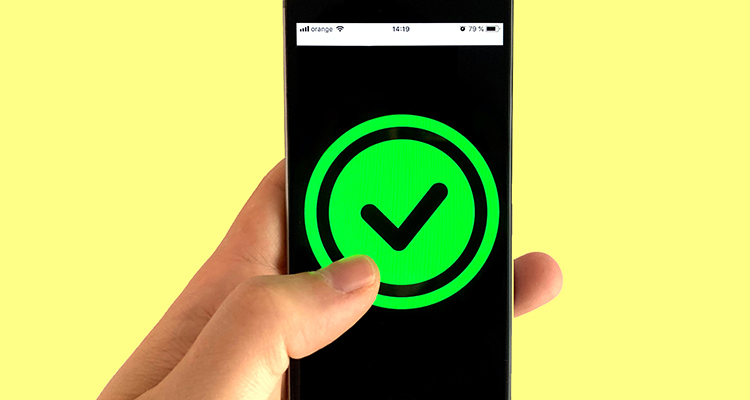How Cognitive Restructuring Works for Insomnia

In this article, we’re continuing our detailed look into the methods used during cognitive behavioural therapy for insomnia (CBT-i). This time we’re focusing on cognitive restructuring. You might also hear this referred to as cognitive control or cognitive reframing. We’ll dive into what cognitive restructuring is, how it works, and the techniques used with this method.
Content
What is CBT-i?
First, let’s cover the basics of CBT-i. CBT-i is a psychological therapy structured over several sessions to tackle insomnia. CBT-i aims to address unhelpful, negative thoughts and actions which are contributing to your insomnia. During the therapy sessions, you’ll learn to identify these unhelpful patterns and be guided through replacing them with practical alternatives. The aim is to break negative cycles and in their place, give you the tools you need to take control and sleep peacefully again.

CBT-i is an evidence-based therapy, which simply means that it has proven results. It’s the first line of treatment recommended for insomnia and produces long term results. CBT-i uses a number of methods during therapy sessions to get these results, cognitive restructuring being one of them.
Understanding the impact of negative thoughts
In order to understand how cognitive restructuring works, you first need to understand the impact your thoughts and feelings can have on your ability to sleep. On some level, we’re all aware of how important sleep is and how much lack of sleep can affect us. In general, this awareness is a positive thing because it encourages us to prioritise our sleep. However, once we start to struggle with insomnia, it’s common to start worrying excessively about sleep loss.

When you’re lying awake in bed at night, you might start feeling increasingly frustrated. You may start looking at the clock and thinking about how many hours of sleep you are going to get. You might start getting very worried about how your lack of sleep is going to affect you the next day. These are all common, very understandable feelings. Unfortunately, this frustration and worry makes you ‘wound up’, which makes it even harder to get to sleep! This document from the University of Massachusetts Medical School explains: “Negative, stressful thoughts about sleep worsen insomnia by triggering emotions such as anxiety or frustration that mobilize the stress response. In turn, the stress response strengthens the wakefulness system”.
If your insomnia is ongoing, this anxiety about sleep and sleep loss might grow. It’s common to start feeling anxious close to bedtime, worrying about whether you’re going to be able to get to sleep. You may begin having very negative thoughts about your sleep. These might be thoughts like: “I should be able to sleep like everyone else,”; “I’m never going to be able to sleep normally,” or “my performance at work is going to be affected and I’ll get into trouble”. All of these thoughts are natural and valid, but unfortunately, they feed into a negative cycle of anxiety about sleep loss worsening your insomnia.
Anxiety isn’t the only problem which stems from negative thoughts about sleep. The National Sleep Foundation explains: “In people with insomnia, inaccurate or dysfunctional thoughts about sleep may lead to behaviours that make sleep more difficult, which then reinforce the dysfunctional thoughts”. This means that when we have negative (and often incorrect) views about sleep, we typically begin to behave in accordance with these thoughts.
These behaviours also become negative and worsen our insomnia. For example, if you worry a lot about sleep, you might start to try to force sleep or start to sleep in for longer periods in the morning to ‘catch up on sleep’. Both of these behaviours actually worsen insomnia. Sleep is involuntary, so trying to force it only causes you to be more aware of your sleep loss and increases the anxiety around sleep. Staying in bed for longer in the morning confuses your circadian rhythm (the system which regulates when you should be awake and asleep). This makes you less likely to sleep at night and more likely to feel sleepy in the morning when you’ve been getting extra sleep.
Since these behaviours worsen your insomnia, they’re reinforcing the negative thoughts you had about sleep. This ‘proves’ to your brain that your thoughts were true and that you should feel anxious about sleep, even though this isn’t really the case. As a result, your anxiety will continue, as will your negative thoughts and insomnia. This is a tough cycle to break, but this is where cognitive restructuring comes into play.
What is cognitive restructuring?
Cognitive restructuring breaks the negative cycle by teaching you to recognise and identify your negative thoughts and behaviours. Once you’re able to pinpoint them, the method helps you challenge and change your thoughts and beliefs. This article on the topic states: “Unhelpful thinking in the form of dysfunctional beliefs and/or cognitive distortions is just like any other automatically occurring bad habit; with practice and effort, people can become more aware of what is happening in their minds and change how they are thinking for the better.”

Your therapy provider will use a number of techniques to achieve this change, as well as giving you ‘homework’ to do between sessions. Your ‘homework’ will be to practice the techniques you’re learning in your daily life, such as when you’re getting ready for bed and when you’re lying in bed at night. As you advance through the therapy and change your thoughts, you’ll find that your anxiety around sleep starts to reduce. This will make it gradually easier to sleep at bedtime.
The more you practice the techniques you learn during cognitive restructuring, the better you will sleep. The goal of cognitive restructuring is to tackle all of the negative thought patterns that contribute to your insomnia so that you can sleep peacefully again. You’ll also be equipped with the skills to keep using cognitive restructuring in the future if you face sleep problems again.
Cognitive restructuring techniques
Incorrect beliefs about insomnia are often referred to as cognitive distortions. The first step of cognitive restructuring is to address these cognitive distortions and the negative thought patterns you are having. Once you’ve become more self-aware, you’ll be taught how to challenge negative thoughts and replace them with positive, helpful thoughts. You’ll be guided through replacing anxiety and worry with relaxation and restful sleep. There are multiple techniques which might be used to help you with this process. Which techniques are used during your therapy sessions will depend on your provider, along with what they feel will best suit your needs.

Psychoeducation
Psychoeducation is typically the first stage of cognitive restructuring. During this stage, you’ll learn about the cognitive model, which is simply a theory explaining how your thoughts, perceptions, and emotions influence your behaviours. Pivotally, you’ll also learn what cognitive distortions are and how damaging they can be. Plenty of examples will be used to help you to understand this. You might be given worksheets or documents illustrating examples so that you can see the cycle of emotions and actions visually. You may also be guided through thinking of examples in your own life.
You may have multiple sessions or ‘lessons’ focusing on cognitive distortions. You might look at common cognitive distortions concerning insomnia. The aim of tackling these mistaken beliefs is to help you see that you should not automatically believe your perceptions about insomnia, and instead, you should challenge them. Learning about these distortions can also lessen your anxiety around sleep loss. Common examples might include:
- The eight-hour sleep mythWhile it’s a common belief that we all need a regular eight hours of sleep to function properly: this is not always the case. How much sleep you need depends on your age, as well as other factors such as your genetics, your activity level, and your health. Many people function well on seven hours of sleep. In fact, sleep guidelines state that the majority of us between the ages of 18 and 64 need between seven and nine hours of sleep. The guidelines emphasise that no less than six hours is advised. In conclusion, getting a bit less than eight hours of sleep isn’t going to hurt you or be detrimental to your health.
- How sleep loss affects daytime performanceA lot of worry about sleep loss tends to focus on how it will affect your performance during the day, particularly at work or school. However, sleep loss affects everyone differently. While it may affect your performance slightly, it’s unlikely that it’s going to cause extreme problems with functioning unless your insomnia is severe.Research has actually shown that it’s often the high stress levels people are experiencing about their sleep loss, rather the sleep loss itself, which affects their performance the most during the day. It’s also essential to remember that insomnia is a valid problem and if you’re really struggling, bringing it up with your employer or teacher can be helpful. Fundamentally, it’s unlikely that your sleep loss will lead to negative consequences in your daily life, especially if you seek help to change it.
- Insomnia’s impact of moodMany people feel that their insomnia negatively impacts their mood. While it’s true that sleep deprivation can contribute to low mood, it’s also likely that anxiety about sleep loss is worsening your mood. You might find that when you wake up in the morning if you’ve slept badly, you’re already assuming your mood will be affected before you’ve even started your day. Realising that only part of the impact on your mood is stemming from your insomnia can be helpful.
- Perceived sleep vs real sleepEvidence shows that the vast majority of people with insomnia are actually getting more sleep than they think. It’s really common to overestimate how long it takes you to drift off to sleep and how long you are awake for if you wake up in the middle of the night. The lighter stages of sleep can confuse you and your perception of time can understandably be thrown off when you’re tired and ‘half asleep’.
Increased self-awareness
Once you’re aware of cognitive distortions and their impact, it’s time to become more self-aware. This stage of cognitive restructuring will guide you through recognising signs within yourself that you are becoming anxious and stressed about your sleep loss. Once you have identified the signs that you’re getting anxious, you can use them to deescalate the situation (with techniques you’ll be taught later on in your cognitive restructuring) before your anxiety increases so much that it impacts your sleep.

To help you become more self-aware, you may be asked to self-monitor, meaning keep a record of your experience. You might be asked to keep a sleep diary to keep track of things like how well you’re sleeping; how often you wake up during the night; how long it takes you to fall asleep; and how tired you felt during the day. This can help both you and your provider pinpoint patterns in your insomnia and figure out how it affects you. You might be given a sleep diary template to fill out, or you might simply be asked to note down important things that you notice about your sleep.
You may be asked to fill out worksheets which ask you to identify the emotions you feel near bedtime. This is sometimes called a ‘thought log’. You will usually be asked to pay attention to both physical and emotional feelings and note them down. For example, towards bedtime you might feel your heart rate increasing; you might notice negative thoughts beginning to run through your head; you may notice you start to feel breathless or shaky; you might feel more alert and awake, even though you were feeling tired previously; or you might feel that your muscles are very tense. There are many ways anxiety manifests and these exercises will help you pinpoint how it affects you.
During this stage, you’ll also learn how to be more aware of your own negative thoughts and cognitive distortions about sleep. You might be asked to make a list of the thoughts you regularly have about your sleep loss. Alternatively, you might be given a list of common negative thoughts and asked to choose the ones which apply to you. Just as with the signs of anxiety, once you are more aware of the thoughts you tend to have, you’ll be able to recognise (and deal with them) as they occur.
Evidence gathering
A key part of cognitive restructuring is learning to seek evidence to assess whether your thoughts are based in truth or whether they are cognitive distortions. Your provider can introduce evidence gathering in a few ways. You may be asked to sit down and really think about a thought or belief you have about insomnia and write down every piece of evidence you can find that it’s true or untrue. With this task, you will be asked to use the knowledge you’ve already learnt through therapy, as well as seeking answers through other reputable resources to assist you.

You might be given worksheets to complete at home when negative thoughts crop up. These worksheets typically have a place to write down the belief you’re addressing, as well as two columns: one for evidence that the thought is factual and one for evidence that the thought is a cognitive distortion. You could also be encouraged to focus on one specific thought which you’ve identified during therapy as ‘homework’ and gather evidence for and against it from your daily life. For example, if the thought is that ‘you are never going to be able to sleep normally’, your evidence that this is true could be that you had a bad night’s sleep. However, you might start to pinpoint evidence of this being untrue, such as getting a few hours of sleep; noticing that other people in your life have similar sleep issues and coming to the realisation that sleep problems are normal, and remembering that you slept well in the past.
Some providers may use imagination exercises to help you gather evidence, such as putting your thoughts on trial. In this exercise, you would first act as the defence, explaining all the reasons you believe the thought on trial to be true. Just like in a court, you will be asked to stick to facts and evidence only rather than mentioning your emotions. You’ll then be asked to act as the prosecutor and voice all the reasons the thought is false. Finally, you’ll be asked to be the judge and make a judgement on whether the thought is true or a cognitive distortion. This type of exercise could be done as roleplay with your therapist, in a more lighthearted way. Alternatively, you may get a worksheet to fill out with the defence and prosecution set out in columns, along with your final judgement at the bottom.
The idea of evidence gathering is to help you find out for yourself that your worries are cognitive distortions, rather than just telling you they are. Allowing you to figure this out for yourself really emphasises the point and helps you to understand it on a more realistic level. This article on the topic aptly states: “Cognitive distortions are biased and inaccurate, but they can also be deeply embedded. Dislodging and replacing them requires evidence about how rational they are.”
Advantages versus disadvantages
Just as evidence gathering helps you to figure out that your negative thoughts about insomnia are cognitive distortions, this technique is designed to help you to figure out for yourself whether a cognitive distortion is ‘worthwhile’. It’s all well and good a therapist saying to you that these negative beliefs are making things worse, but helping you reach that conclusion yourself allows you to see that much more clearly.

During this technique, you’ll be asked to consider both the advantages and the disadvantages of sustaining your cognitive distortion. You may be asked to fill out a worksheet to list the positives and negatives of maintaining a specific belief. To help you see things clearly, you might be given some questions to answer. For our example, we’ll use the cognitive distortion, “my insomnia will never go away”. With our example cognitive distortion, you might be asked questions like:
- What are you gaining from believing your insomnia won’t go away?
- Does this belief make you more likely to sleep?
- Does thinking this make you feel anxious?
- When you feel anxious, does it make it harder to sleep?
- How is this thought helping you with your insomnia?
The questions you’re asked will depend upon the provider, along with the cognitive distortion you’re addressing. Once you’re able to figure out for yourself just how negatively these beliefs can impact you, you’re likely to be more dedicated to the therapy you’re engaging in. The more dedicated you are, the better results you will get.
Setting aside ‘time to worry’
Setting aside time to worry might sound silly at first, but the technique can actually be beneficial. You might also hear this referred to as ‘structured worry time’. You’ll be guided through setting aside a chosen ‘worry time’ each day. This might be 10 to 30 minutes depending on what your provider (and you) feel is right for you. The aim is to focus on your worries during this time and get them all out of your system. This applies whether your worries are specifically about sleep or other areas of your life. Daily worries which aren’t related to your insomnia can still impact your insomnia negatively and often seem to be amplified at night when you have no distractions, so it’s important to tackle them too.

You might be asked to note your worries down or record yourself talking about them. Some providers may encourage you to visualize the worries leaving your mind and being transferred to the paper or recording, so you are no longer carrying them with you. The rest of the time if a worry comes into your mind, you should set that worry aside and come back to it during your ‘worry time’. If you’re lying in bed and find yourself worrying, remind yourself that you will deal with them in your ‘worry time’ the next day. The idea of this is to train your brain that there is a time and place for worrying, a safe space so to speak, and that it doesn’t need to focus on worries outside of this time (especially not when you are in bed trying to sleep).
While this concept of ‘worry time’ can be useful in itself, some providers will add to this exercise. They might ask you to review the worries you have noted down and highlight daily worries which you can do something about. You can then put together a logical plan to deal with the actionable problems you’ve noted. When it comes to worries about insomnia specifically, you might be asked to highlight them separately. Your provider may guide you through addressing each of these worries using other cognitive restructuring techniques to help you reframe them.
Socratic questioning
A vital part of cognitive restructuring is learning to question your automatic thoughts. This is typically introduced using a method called Socratic questioning. This article explains the source of this name: “Socrates was a Greek philosopher who emphasized the importance of questioning as a way to explore complex ideas and uncover assumptions. This philosophy has been adopted as a way to challenge cognitive distortions.”

The basis of this method is to identify and question each individual cognitive distortion. You’ll be asked to focus on one cognitive distortion about your insomnia and then will be guided through answering some Socratic questions. You might be given a worksheet to help you through this, or your provider might directly ask you the questions, and you will voice your answers. You should take your time to really think about your answers rather than rushing. Examples of Socratic questions include:
- Is this thought based on facts or my emotions?
- Is there any evidence that this thought is accurate?
- Is there any evidence that this thought is inaccurate?
- Could I be misinterpreting the situation?
- Am I looking at this in a black and white way, when in reality there’s more to it?
- How else could the situation be viewed?
You’ll start off being guided with this, with the aim of giving you the tools to start questioning your automatic thoughts on your own in the future. Giving you these tools enables you to tackle cognitive distortions when they come up, stopping them in their tracks.
Decatastrophizing
Catastrophizing refers to thinking a situation is worse than it is or assuming that the worst is going to happen. When it comes to cognitive distortions, your mind starts to run wild, your anxiety begins to heighten, and you can start to think all sorts of negative things which aren’t actually based in reality. We’ve already discussed how this cycle worsens your insomnia.
The decatastrophizing technique in cognitive restructuring aims to give you the tools you need to overcome catastrophizing by helping you view your worries in a new light. This 2020 article defines this decatastrophizing as, “a form of cognitive reappraisal that can help us think differently about emotional situations, provide emotional regulation, and reduce catastrophic thinking and anxiety.”
This is done by asking you to answer straightforward questions about each specific catastrophized thought. You might be given a worksheet to write your answers down or may be asked to voice your answers to your therapist. You’ll be guided through thinking about how likely your feared outcome is to occur. For example, if the cognitive distortion you’re working on is that “you’ll never get a solid eight hours of sleep’’, you will be asked to logically think about how likely it is that this is going to be the case. You’ll quickly find that this is very unlikely to come true, for many reasons.
You might be asked to imagine what would happen if your thought did come true. You’ll be asked to picture what the worst possible outcome could be. This is sometimes referred to as the ‘what if’ technique. This sounds counterproductive, but much of the time, when you really take the time to think about it, the worst outcome is not actually as bad as your anxiety might have made you think. In our example, the worst possible outcome would be that you never sleep for eight hours. Even if that was the case, we don’t all need eight hours of sleep to function. Even if you only got a few hours of sleep each night, you would still be getting some sleep and would still be able to function, even if it wasn’t at your best.
You might also be encouraged to think about how you would cope if the worst did happen. In our example, you would already be engaging in therapy, meaning you’ve reached out for help which is a very productive coping strategy. So if the worst scenario were to occur, you could reach out for help again or use the tools you’ve learnt in therapy and find ways to improve things. In conclusion, this method: “helps to reduce the irrational level of anxiety associated with cognitive distortions. It highlights the fact that even the worst-case scenario is manageable.”
Considering alternatives
A pivotal part of cognitive restructuring is learning to replace negative thoughts with positive ones. Considering alternatives to your negative thoughts will often be used as part of the other techniques we’ve discussed. For example, when you’re working on increasing self-awareness, when you make a list of the negative thoughts you’re having, you could be guided through replacing each thought with a more positive, realistic alternative. You might be given a worksheet with two columns: one to list the negative thoughts you’re having along with a corresponding column to write down an alternative, positive thought.

Depending on your provider, different ways of emphasising alternatives may be used. You might be guided through using positive affirmations, meaning you focus on one or two short, positive thoughts and repeat them over and over again in your mind or out loud. You may be encouraged to use your affirmations when you find negative thoughts creeping into your mind. Positive affirmations about insomnia could be “I can sleep throughout the night” or “I am calm and relaxed”, for example.
You might be taught to stop negative thoughts in their tracks when they occur. The more self-aware you become, the better you will get at this. You might be encouraged to think the word ‘stop’ or even to say it out loud when a negative thought about your insomnia occurs. You will then actively replace that thought with a more positive, helpful one. For example, if you’re lying in bed and start thinking, “I’m never going to be able to sleep tonight”, you’ll learn to recognise this is a cognitive distortion and stop that thought. You might replace it with a positive alternative such as “I can’t know how I will sleep tonight, but I’ve been working hard at therapy so it’s likely I’ll sleep well”.
Setting sleep goals
As you progress through therapy, you’ll learn to put all of the techniques we’ve discussed together and start to form a positive habit of using cognitive restructuring to deal with negative thoughts in a productive way. This will take time, so it’s important to be committed to your therapy sessions and put the work in.

Your provider will help you start integrating cognitive restructuring skills into your daily life by setting sleep goals. These goals are like homework that you are required to carry out at home at bedtime. These might include things like using your positive affirmations to tackle negative thoughts; identifying and stopping negative thoughts at bedtime, and filling out sleep diaries or thought logs to keep track of your progress. Cognitive restructuring is often combined with relaxation techniques (which we’ll discuss in a later article) to produce optimum results for patients.
The goals your provider sets will be gradually built up throughout your therapy sessions to fit in with what you’re learning and to ensure they are manageable. The more you engage in these exercises at home, the easier tackling negative thoughts will become. In turn, this will lead to reduced stress and anxiety at bedtime and allow you to start sleeping more peacefully.
This article fittingly concludes: “It is useful to think of cognitive restructuring as a form of mental weight lifting. By practicing this technique, you are developing mental muscles that formerly were not used. At first the practice will be difficult, effortful, and time consuming. Over time and with repeated practice, it will become much easier.”
The benefits of cognitive restructuring
To summarize, let’s take a look at the many benefits of the cognitive restructuring method:

- Giving you the tools to tackle cognitive distortions
Through cognitive restructuring, you will learn to identify and tackle cognitive distortions, breaking the negative cycle. You’ll learn to replace negative thoughts with helpful, positive thoughts.
- Lowering anxiety and stress
By tackling cognitive distortions, your anxiety and stress levels about sleep will lower. Over time, this will mean that you start to feel more relaxed and less worried about how you’ll sleep when you go to bed.
- Helping you get the sleep you need
Less anxiety and more relaxation mean you’re far more likely to sleep peacefully, allowing you to overcome insomnia and get the sleep you really need.
- Giving you the tools to regulate your emotions
Cognitive restructuring is a powerful, positive habit to learn. It enables you to control your emotions and become more self-aware, which can also be useful in other areas of your life.
- Restoring a positive relationship with ‘bedtime’
Once you’re able to sleep restfully and aren’t worried about sleep, your relationship with bedtime will change for the better. You might even start to look forward to going to bed and enjoy the feeling of relaxation you get into bed.
- Long term results
Cognitive restructuring gives you the tools you need to continue to tackle negative thoughts even after therapy is over. This means that you can continue to sleep peacefully in the long term and deal with any cognitive distortions if they crop up in the future.
- Proven results
Cognitive restructuring is evidence-based, which means that it’s proven to have positive results in treating insomnia. When cognitive restructuring is used as part of a comprehensive CBT-i programme, it produces fantastic results. The National Sleep Foundation states that when the method is used as part of a full CBT-i programme: “as many as 70% to 80% of patients with primary insomnia experience improvements. Benefits include less time to fall asleep, more time spent asleep, and waking up less during sleep.”
Where to access CBT-i
Now that we’ve covered just how effective CBT-i can be, I’m sure you’re wondering how you can access it. There are a few ways you can access CBT-i, depending on your financial resources; where you live; and your preferences. Your options include:

- Your doctorYou may be able to access CBT-i through a referral from your doctor, depending on what is available in your area. You may also be able to self-refer. You can ask your doctor about what is available. Be aware this might involve being on a waiting list.
- Private CBT-iAccessing CBT-i through a private therapist allows you to quickly get your therapy, but it can be a costly option. You can find private therapists through an online search. Ensure you do your research and check the therapist you choose is appropriately qualified and registered.
- Online insomnia treatmentYou could choose to use online insomnia treatment. This allows you to access insomnia therapy in your own home on your laptop, tablet, or phone. It can be a more cost-effective option and lets you get your therapy when you want it.
References
University of Massachusetts Medical School, (2020), “Cognitive Restructuring and Sleep Medication Reduction Techniques”.
National Sleep Foundation, (2020), “Cognitive Behavioral Therapy for Insomnia (CBT-I)”.
MentalHelp.net, (2020), “Cognitive Restructuring”.
Rebecca Joy Stanborough, MFA, (2020), “How to Change Negative Thinking with Cognitive Restructuring”. Healthline.
Therapist Aid, (2020), “Cognitive Restructuring”.
Jeremy Sutton, Ph.D., (2020), “16 Decatastrophizing Tools, Worksheets, and Role-Plays.” PositivePsychology.com















